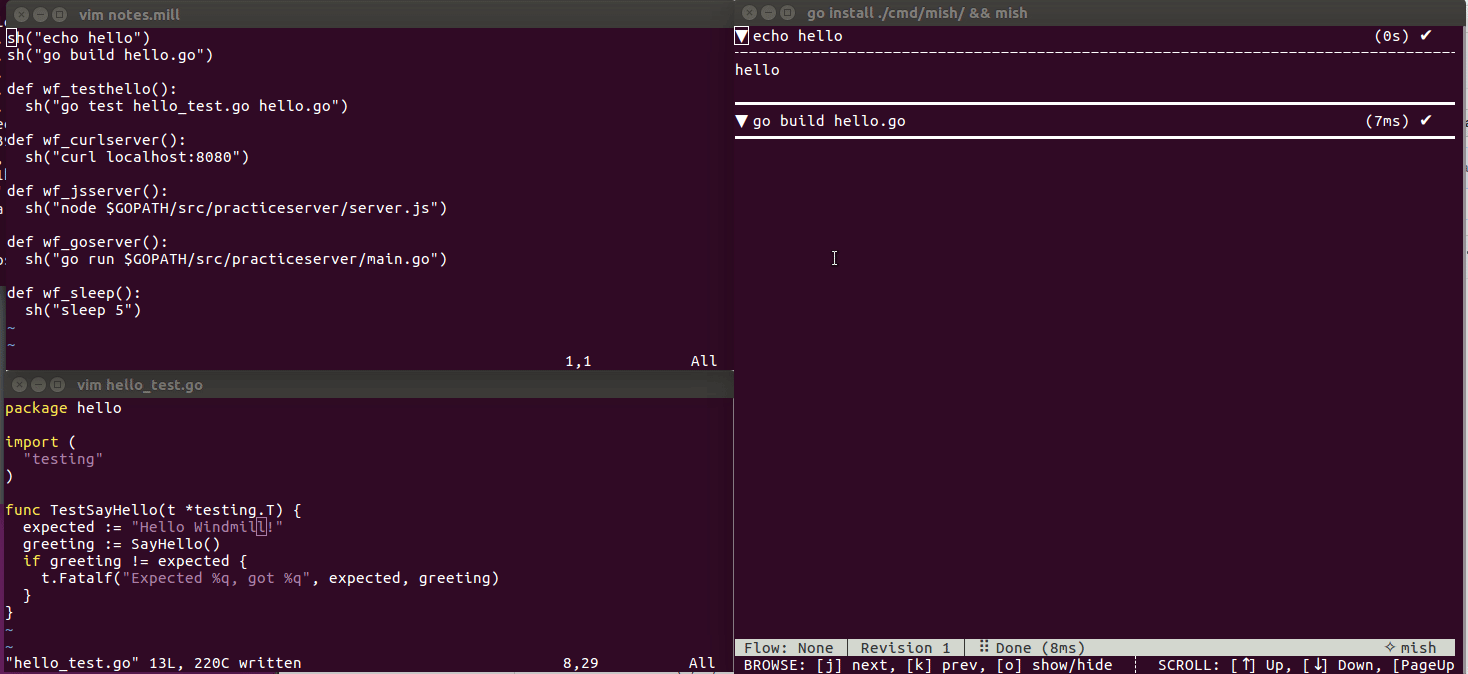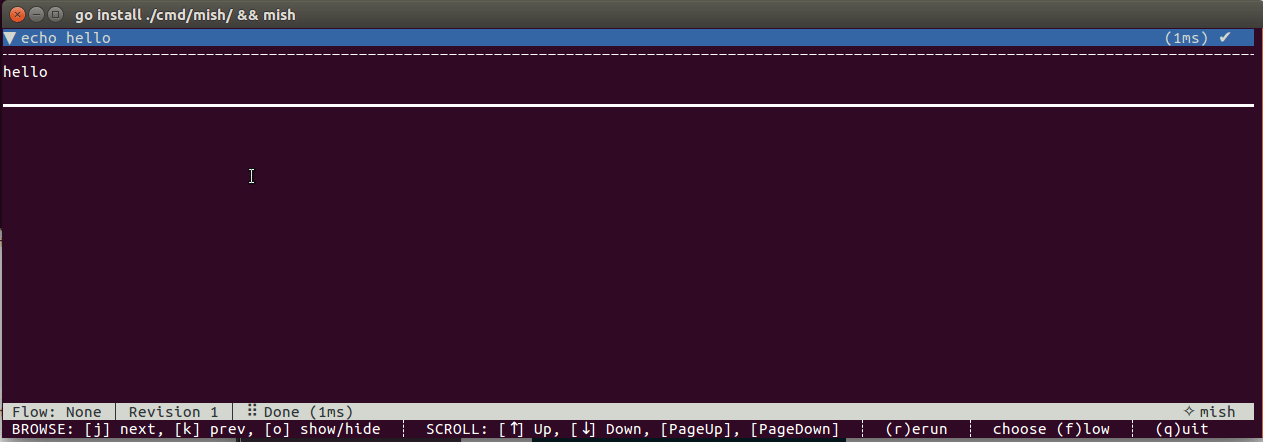
mish: Flexible Shell Notebooks
Shell makes it easy to rerun previous commands, but hard to edit them. Rerunning is <up>-<enter>, but editing requires <up>-<left>-<left>-<backspace>-<wait-how-many-backspaces-was-it>-<etc.>. If you’ve ever been irritated editing in shell, our new tool mish can save you time and hassle.
mish is a terminal app that augments easy-rerun with a better editing experience: your existing editor. By storing data in a file (notes.mill)instead of as command-line arguments, mish lets you flex your muscle memory to tweak your workflow. Your cursor stays put; your keyboard shortcuts are familiar.
Your notes.mill file is your personal notebook. It’s scratch space; edit as frequently as you need to change an argument. It’s durable; you won’t lose tuned commands to the shell history limit. It’s organized; different workflows can be separated and organized.
You can get [mish from github](https://github.com/windmilleng/mish). In 5 minutes, you’ll have a better shell experience. Have fun! If you’re still here, I’ll give a quick tour of mish.
Hello World
mish works best when you run two apps side-by-side: on the left, your editor with your code and a new file notes.mill in the root of your project. Open a terminal on the right and run mish.
notes.mill is written in Mill, a dialect of python (if you tell your editor that .mill files are python, you’ll get syntax highlighting, etc.). A good hello world is:
sh("ls")
sh("echo hello mish")
Switch into the mish window and hit r to rerun.
 selecting a workflow
selecting a workflow
Workflows
Sometimes I want to run unittests; other times I want to start a server. Mill supports this by letting you define workflows:
def wf_hello():
sh("ls")
sh("echo hello mish")
def wf_serve():
sh("./server/main.py") # run the server
Now pressing r will reload the Mill file, but the interesting workflows are in functions. Hit f to list available workflows, and pick one to focus on.
Refine
My magic moment with mish, when it became an indispensable tool, is when I’m modifying command lines. I end up with a section like:
def wf_scratch():
sh("go test -run TestWatchOneFile$ ./os/watch") # run one test
sh("go test ./os/watch") # run all tests in the watch package
sh("go test ./...") # run all tests in the project
Because mish will error after a failing command, this helps me iterate while I’m seeing red, until everything passes and I’m seeing green.
Mish your way
What will make mish click for you? Maybe it’s the way it can take fewer keystrokes to restart a server. Or making sure you generate code as you’re editing your protocol buffers. But we’re pretty sure the next time you’re editing a command in shell, you’ll have a better day if you try mish.
Make sure to let us know by filling out our 5-minute survey.

Originally posted on the Windmill Engineering blog on Medium